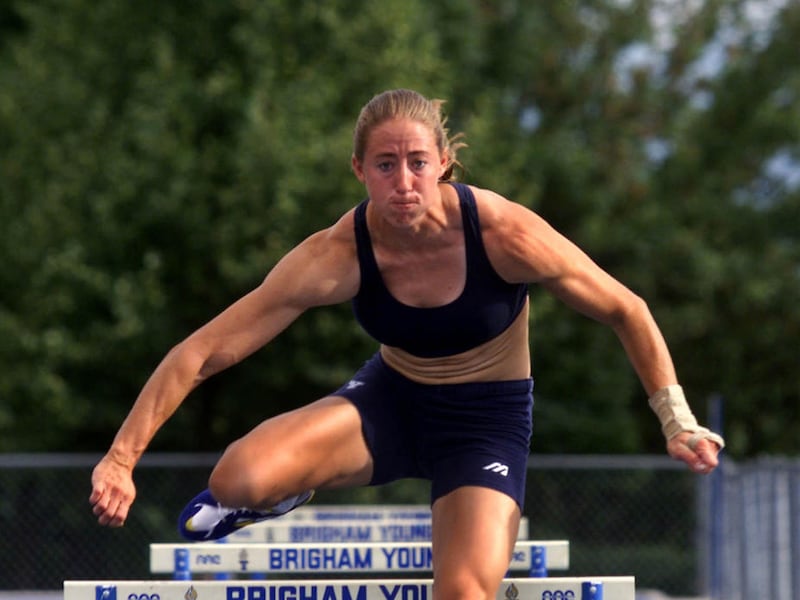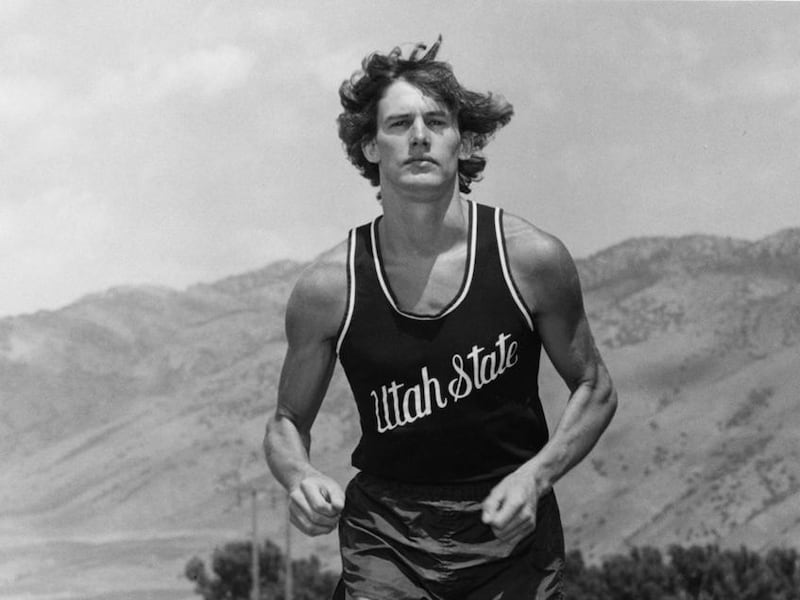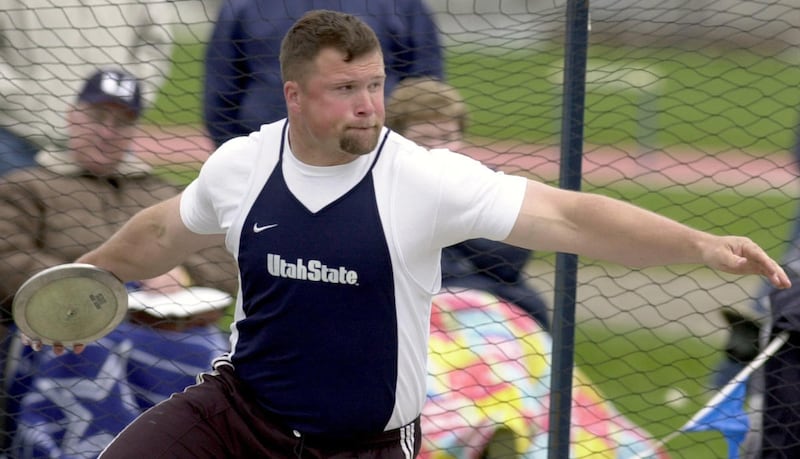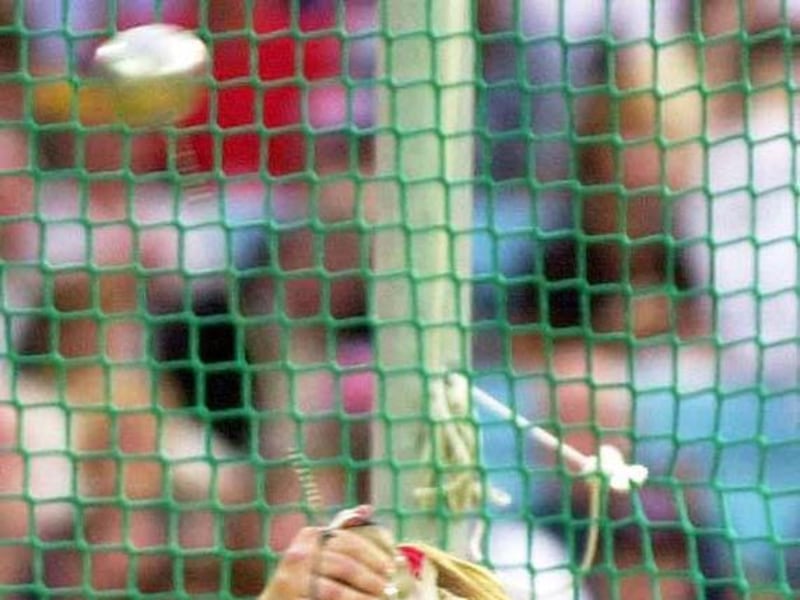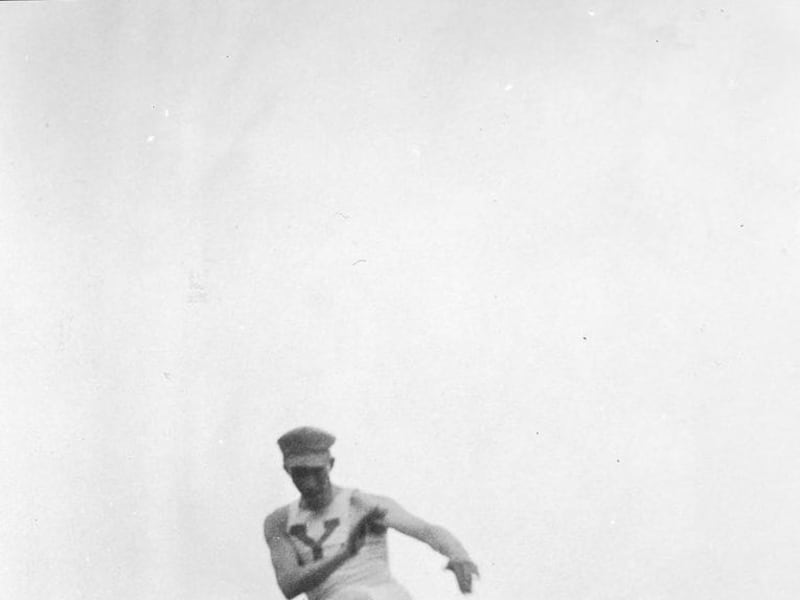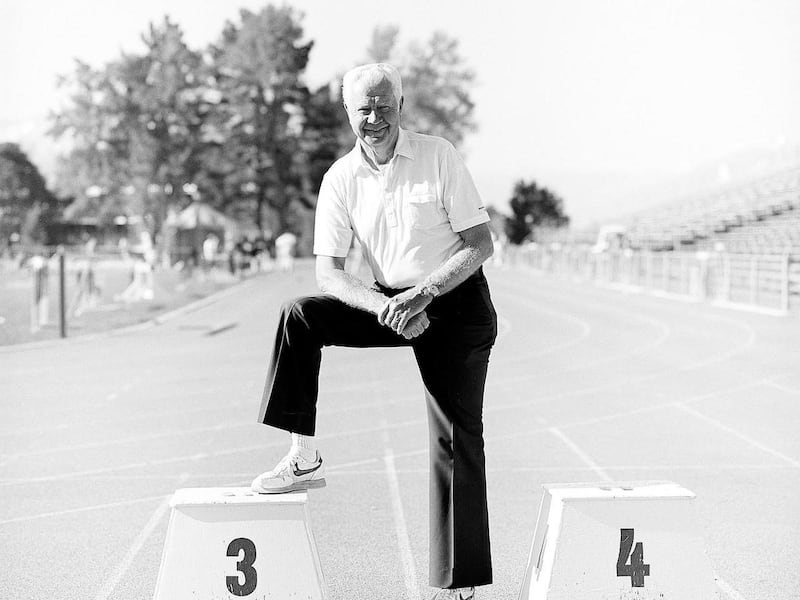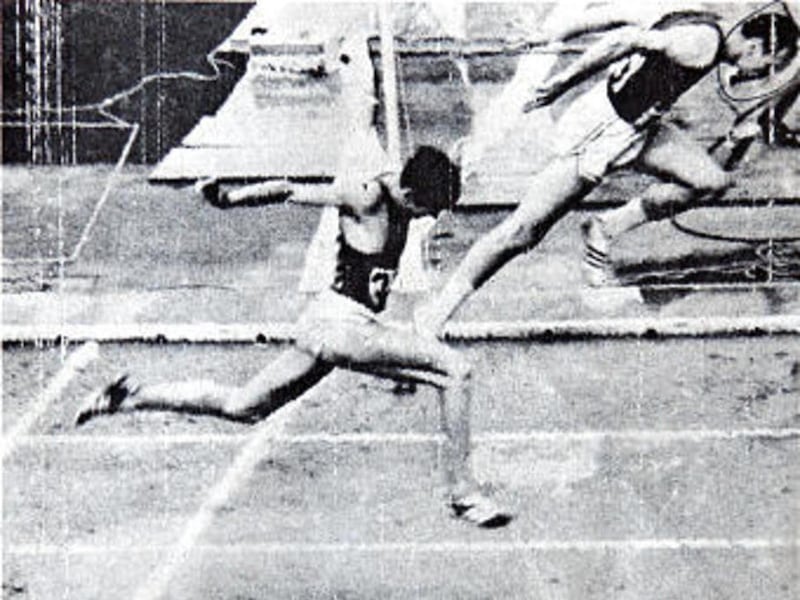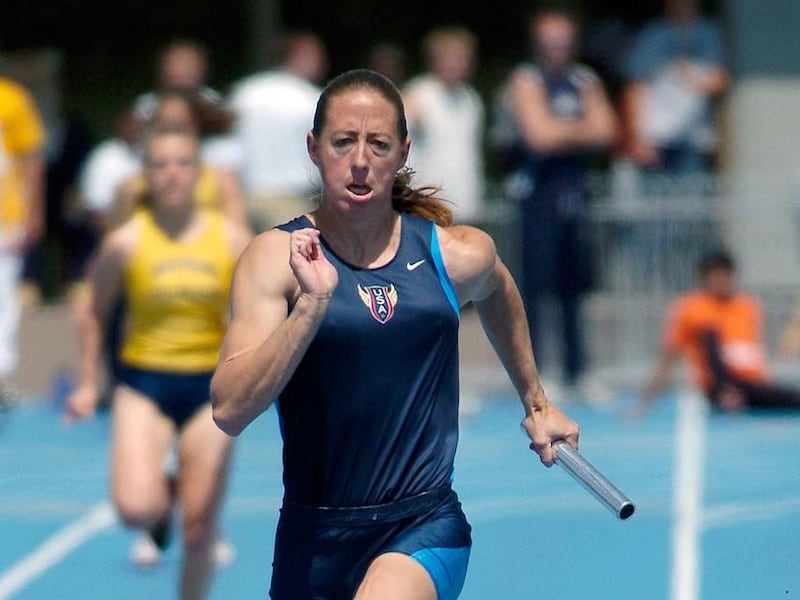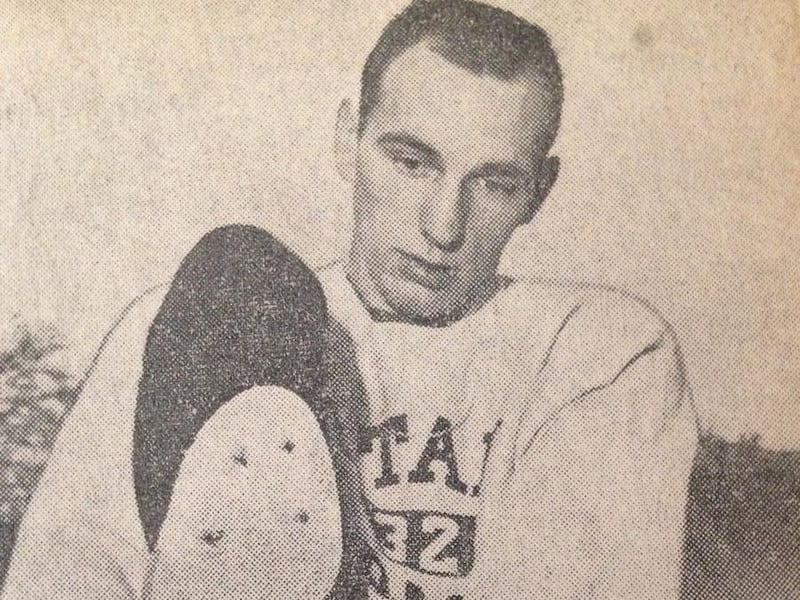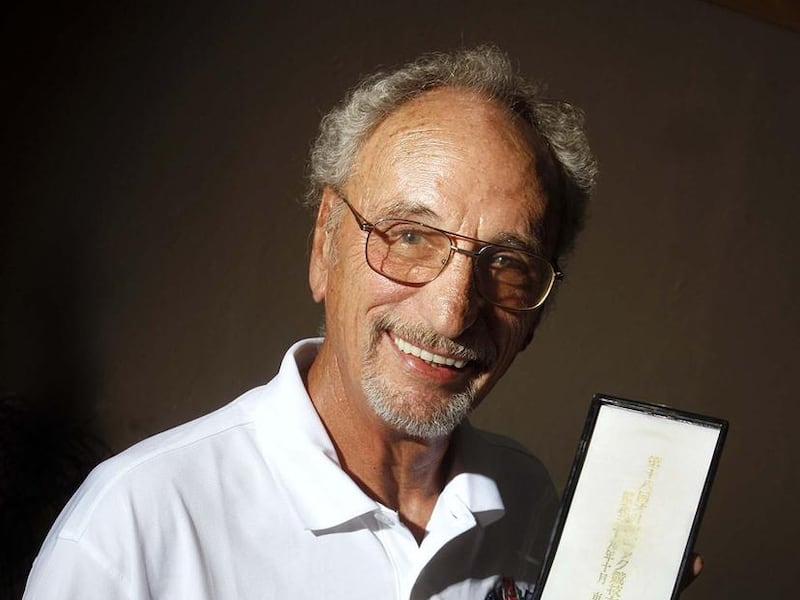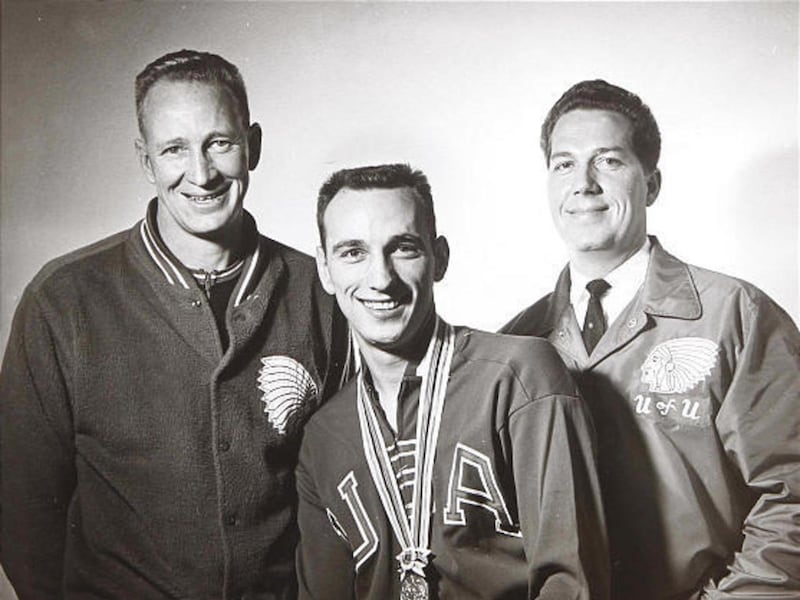There is no next year. It's four years. It's one thing to compete at a national-class level for four years; it's another thing to be on on the day of the trials. – Ed Eyestone
A handful of Utahns will compete in the upcoming U.S. Olympic track and field trials in Eugene, Oregon (July 1-8), where all of them will face long odds in trying to place in the top three of their event to make the Olympic team.
Unlike some countries that use at least some subjective means of selecting a team, the U.S. selection is based solely on the results of the trials.
"There is no next year," says Ed Eyestone, a two-time Olympian. "It's four years. It's one thing to compete at a national-class level for four years; it's another thing to be on on the day of the trials."
The U.S. trials competition is at least as challenging as the Olympics themselves in many events. Four of the 10 fastest hurdlers in history, for example, will compete in the trials, not counting Olympic champion Dawn Harper. Only three get Olympic berths.
In the 120 years since the birth of the Modern Olympics, only 15 native Utahns have managed to win a spot on the U.S. Olympic track and field team. Eight of them competed in the middle-distance or distance races. Three of them managed to bring home medals. Here is a look at those 15 athletes:
* Alma Richards (Parowan/BYU) — He is one of the state’s greatest athletes and almost no one has ever heard of him. Richards might have been another Jim Thorpe-type figure if not for the outbreak of a war. He won the gold medal in the high jump at the 1912 Olympics with an Olympic-record clearance of 6-4 and then he began to expand his repertoire. At the 1913 U.S. championships, he was first in the high jump and second in both the long jump and discus. In 1915 he won the decathlon at the U.S. championships, 500 points ahead of his nearest competitor. He was favored to win the decathlon at the 1916 Olympics, but the games were canceled because of World War I.
* Clarence Robison (Millard High/BYU) — Most people knew him as the tall, kindly, white-haired coach of the BYU track program for four decades. Before that, he was an Olympian. He placed third in the 5,000-meter run at the 1948 Olympic trials, then joined the American team on a ship bound for the London Games. In those days, Americans believed it was unhealthy to train long distances, so when he arrived in London he was shocked to learn that not only were the Europeans running 11-12 miles a day — more than Robison ran in a week — but they were thriving. As fate would have it, he ran in the same heat as Emil Zatopek, the legendary Czech runner who was about to win the first of the four gold medals. As Robison labored to hold the pace and stay with the lead pack late in the race, he turned to his right to see Zatopek pull up to his shoulder. Their eyes met briefly — and Zatopek smiled. He wasn’t even breathing through his mouth, Robison would recall — “He was out for a Sunday stroll.” Robison didn’t advance to the final, but he did learn that humans are capable of much more training than Americans believed, a lesson he applied as a coach.
* Blaine Lindgren (Cyprus High/University of Utah) — Lindgren might have been the 1964 Olympic 110-meter high hurdle champion if not for a mistake. He had taken up track as a high school junior when his football coach suggested it would improve his speed. He went on to become an All-American at Utah (when the Utes still had a men’s track team). He won the 1963 Pan American Games and finished third in the 1964 Olympic Trials. In the Olympic final in Tokyo, he and countryman Hayes Jones were in lockstep to the finish, but Lindgren appeared to have a slight lead. There were five lines painted across the cinder track and Lindgren mistook the first line for the finish, dipping at that line — five yards too soon. He was declared the winner initially, but after reviewing the finish photo, the results were reversed and Jones was declared the winner and Lindgren the silver medalist.
* L. Jay Silvester (Bear River High/Utah State) — Having competed in four Olympic Games and earned an Olympic silver medal, he is Utah’s greatest Olympian. He had a remarkable career — seven world records (three were never ratified), six U.S. championships and four Olympics from 1964 to 1976 in which he placed fourth, fifth, second and eighth, respectively. Strangely, he won the U.S. trials three times yet watched an American win the gold medal in three of his four Olympic appearances. He was at his best heading into the ’72 Games, winning 22 straight competitions and setting three world records. In Munich, he was in first place when Ludvik Danek of Czechoslovakia beat him on his final throw.
* Wade Bell (Ben Lomond High/Oregon) — Bell, a three-time All-American at Oregon, was a sub four-minute miler at Oregon but made his mark at the 800-meter distance. He was the NCAA, U.S. and Pan American Games champion, recording a best time of 1:45.0. He also won the 1968 Olympic Trials, but in the Mexico City Games he failed to advance to the final.
* Richard George (Millard High/BYU) — He was such a versatile athlete that BYU offered him scholarships in football, basketball and track. He decided to focus on track after a year of football at BYU and became the U.S. champion in the javelin and a two-time All-America. He placed second in the 1976 Olympic trials, but failed to make the Olympic finals in the Montreal Games after coming within 12 feet of the world record on a warm-up throw. He probably would’ve continued to rise in the sport but elected to retire and pursue an MBA at Harvard.
* Mark Enyeart (Uinta High/Utah State) — A 100- and 200-meter sprinter in high school, Enyeart moved to the 400 as a USU freshman and then to the 800 as a junior in 1975. He became a sensation that year, winning the indoor and outdoor NCAA championships and the U.S. championships, where he beat world record holder Rick Wolhuter. Despite injuries and illness, he finished third in the Olympic Trials and ran in the Montreal Games, where he failed to advance to the final. In 1977, he won the NCAA championships again and went on to run professionally for several years before becoming a special agent for the FBI. No Utah collegian or Utah native has ever better Enyeart’s best time of 1:44.84.
* Ed Eyestone (Bonneville High/BYU) — He is one of only two Utah track athletes to compete in more than one Olympic Games. Eyestone, a four-time NCAA champion, finished second in the Olympic Trials marathon in both 1988 and 1992 and went on to place 29th and 13th in the Seoul and Barcelona Games, respectively. He was on his way to making the team for a third time in 1996, running in second place in the 10,000-meter race at the Olympic trials with just two laps to go and holding a big lead over third place. But the heat caught up with him, and he wilted so badly that he actually was pulled off the track. Eyestone, now BYU's head coach, was one of the most successful professional road racers in U.S. history, winning five Road Racer of the Year awards.
* Julie Jenkins (Plains City/BYU) — Jenkins was raised in Utah, but her family moved to Colorado during her high school years. Returning to the state to attend BYU, she became the most accomplished female track athlete Utah has ever produced. She won the 800 at the 1987 NCAA championships and a year later she won eight of nine races leading up to the 1988 Olympic Trials. But at the trials, she panicked and launched a full sprint into the lead with 300 meters to go, fading to fifth in the homestretch. Bad luck and bad timing seemed to stalk her. In 1991, while walking across the street to take a bus to the U.S. championships, she was hit by a van, causing leg, hip and back injuries that hampered her preparations for the next year’s Olympics. She surprised everyone by making the Olympic team anyway with her second-place finish in the Olympic Trials with a time of 1:59.15. At the Barcelona Games, she was running with the lead pack with 300 meters to go when she was spiked from behind and faded to last place with a bloody ankle. In 1993 she made the U.S. world championships team but gave up her spot on the team when she learned she was pregnant. Her best time of 1:57.82 still ranks her as the eighth fastest American ever.
* Amy Christensen Palmer (Grantsville/BYU) — A seven-time All-American, she placed fifth in the shot put in the 1996 Olympic Trials. She took up the hammer throw, relatively late in her career, and proceeded to set an American record and place second in the 2000 Olympic Trials. She was eighth in the Sydney Games and carried the Olympic torch for her team.
* Tiffany Lott Hogan (American Fork High/BYU) — She was a 10-time All-American, an NCAA indoor hurdle champ and two-time NCAA heptathlon champion. In 2000, she finished fourth in the heptathlon at the Olympic trials, missing an Olympic berth by one place. She took time off to have a baby, then came back in 2004 and made the team with a second-place finish in the trials. She placed 20th at the Athens Games.
* James Parker (Northridge High/Utah State — He was a three-time U.S. champion in the hammer throw and a nine-time All-American, as well as the Pan American Games silver medalist. In 2004, he won the Olympic trials and placed 21st in the Athens Games.
* Lindsey Anderson (Morgan High/Weber State) — Anderson rose to national prominence in the 3,000-meter steeplechase in 2007, the year before the Beijing Olympics, when she placed second in the NCAA championships and third in the U.S. championships. A year later, she finished second in the Olympic trials with a personal record time of 9:30.75. In Beijing, she was eighth in her heat and 24th overall.
* Shalaya Kipp (Skyline High/Colorado) A few weeks after winning the steeplechase at the 2012 NCAA championships, she placed third in the Olympic trials by chopping seven seconds off her best time ever, which also marked the first time she met the A standard for the Olympics. She has never run faster. In the London Games, she was 12th in her heat and didn’t’ qualify for the finals. She qualified for the world championships in 2013 and was ninth in her heat.
* Jared Ward (Davis High/BYU) — He has not competed in an Olympics yet, but he already has won a place on the 2016 U.S. team. The marathon trials were held in February, and Ward, a six-time All-American, finished third with a time of 2:13:00.
Doug Robinson's columns run on Tuesdays and Wednesdays. Email: drob@deseretnews.com

